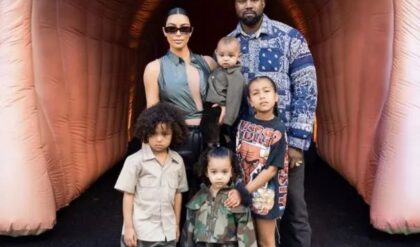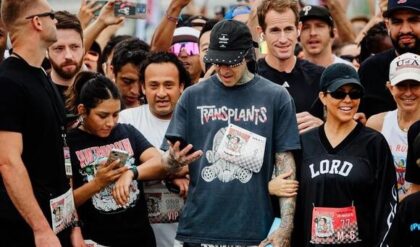
The Toronto Blue Jays’ decision to part ways with closer Jordan Romano marks the end of an era. With Romano gone, the franchise’s only remaining link to Alex Anthopoulos’ tenure is the powerhouse first baseman, Vladimir Guerrero Jr.
Romano’s departure came as no surprise, given his $7.75 million projected arbitration salary and the lingering concerns over his elbow surgery recovery. Nevertheless, it’s a move that underscores the Blue Jays’ willingness to take calculated risks, evidenced by previous signings such as those of Kirby Yates and Chad Green, both of whom came with their own sets of injury uncertainties.
As Toronto navigates the offseason, Guerrero stands as a pivotal figure in their plans. The slugger, a four-time All-Star and 2021 AL MVP finalist, is projected to command $29.6 million in his final year of arbitration in 2025 before entering free agency.
At only 25 years old, his potential free agency, absent a long-term contract extension, has Blue Jays fans on edge. Guerrero was signed as a promising 16-year-old in 2015 during Anthopoulos’ final year in Toronto, with then-scouting director Ismael Cruz noting Guerrero’s natural prowess, even as a preteen.
A look back at the legacy of Anthopoulos’ era reveals the shifts in Toronto’s roster landscape. Players from his tenure have accumulated a combined 60.5 bWAR (Baseball Reference’s wins above replacement) after leaving via trades, free agency, or release.
These exits have been partially mitigated by acquisitions under team president Mark Shapiro and general manager Ross Atkins, whose replacements have collectively added 43.5 bWAR. Yet, the situation remains fluid, with long trade trees, such as those involving Erik Swanson and José Berríos, still developing.
To highlight, players like Edwin Encarnación left big shoes to fill, managing a 7.2 bWAR post-Blue Jays. However, his replacements, Kendrys Morales and Steve Pearce, could muster only a combined 1.4 bWAR, illustrating the talent gap Toronto’s management has been aiming to close.
Other trade dynamics, such as the complex networks stemming from Anthopoulos-era players, continue to shape the team’s composition and competitiveness. The impact of trades involving Drew Hutchison and Marcus Stroman exemplifies the shifting value calculation, with multiple players contributing varied bWAR outcomes over years.
For Shapiro and Atkins, the challenge of filling roster gaps with limited prospect depth has led to robust free-agent pursuits in recent years. The signings of players like George Springer, Kevin Gausman, and Hyun Jin Ryu have bolstered the team’s war chest, adding a substantial 39.3 bWAR from 2020 onwards. This strength has contributed towards a solid performance record for the team, enhancing their resilience against the backdrop of a fluctuating talent pool.
However, the financial implications of these signings cannot be overlooked. As the Blue Jays navigate payroll constraints, the Romano decision appears to be a strategic funding move in their pursuit of a competitive edge come 2025. The effort to maintain a winning team adds urgency to securing player-specific investments, such as the potential signing of Juan Soto.
In terms of player retention, Toronto’s front office has struggled to lock in homegrown stars for the long haul. Only Randal Grichuk and José Berríos have been signed to extensions exceeding five years, leaving prized talents like Guerrero and Bo Bichette without long-term deals.
This season could very well determine whether Guerrero decides to explore free agency or solidify his future with the Blue Jays. If he chooses to leave, it would mark the end of a significant chapter, with no Anthopoulos-era players remaining to carry forward that legacy.
News
Troubling Photo Surfaces Of Randy Moss Following His Depressing Health Announcement
Randy Moss (Photo by Stephen Dunn/Getty Images) Randy Moss has the entire sports world on edge about his health. The Hall of Fame wide receiver and current ESPN analyst did something he never does as he revealed at the start of…
VIDEO: Newest Footage From Highmark Stadium Has Fans Wondering How On Earth The Buffalo Bills Can Host SNF Game vs. 49ers
Highmark Stadium (Photos via @NFL/X) Fans on social media are wondering how the Buffalo Bills will be able to host a football game at Highmark Stadium this Sunday following heavy snowfall at Orchard Park over the weekend. The Bills appear to be…
REPORT: Jacksonville Jaguars Give Sad Injury Update On QB Trevor Lawrence After He Was KO’d On The Field
Trevor Lawrence (Photo via Getty Images)) On Sunday, the Jacksonville Jaguars host the Houston Texans in an AFC South showbowl between the first- and last-place teams. For the first time since November 3, quarterback Trevor Lawrence saw the field. Unfortunately, his time in the…
Concussion Doctor Gives Frightening Update On Trevor Lawrence After Jaguars QB Was Knocked Out Cold vs. Texans
Trevor Lawrence (Photo via CBS) A brawl erupted in Jacksonville after Texans linebacker Aziz Al-Shaair delivered a late, brutal hit on Jaguars quarterback Trevor Lawrence that knocked him unconscious. Al-Shaair made hard contact with Lawrence’s head and neck area as he was…
VIDEO: Cameras Caught Texans’ Azeez Al-Shaair Getting Dragged Off Field By Security After Getting Into Altercation With Fans & Trying To Fight The Entire Jaguars Team
Azeez Al-Shaair (Photos via Fox) Houston Texans linebacker Azeez Al-Shaair will most likely catch a rightful suspension from the league after what he did to Trevor Lawrence. Jaguars QB Trevor Lawrence was carted off the field on Sunday after taking a hit…
Buffalo Bills Announce Postponement Of Special Event At Highmark Stadium Ahead Of SNF Game vs. 49ers
Highmark Stadium in the snow. (Photo via @ChrisWTOL/Twitter) The Buffalo Bills have announced that their ‘Sunday Night Lights’ drone show, initially scheduled for halftime during this Sunday’s game against the San Francisco 49ers, has been postponed. This comes as a result of the…
End of content
No more pages to load











